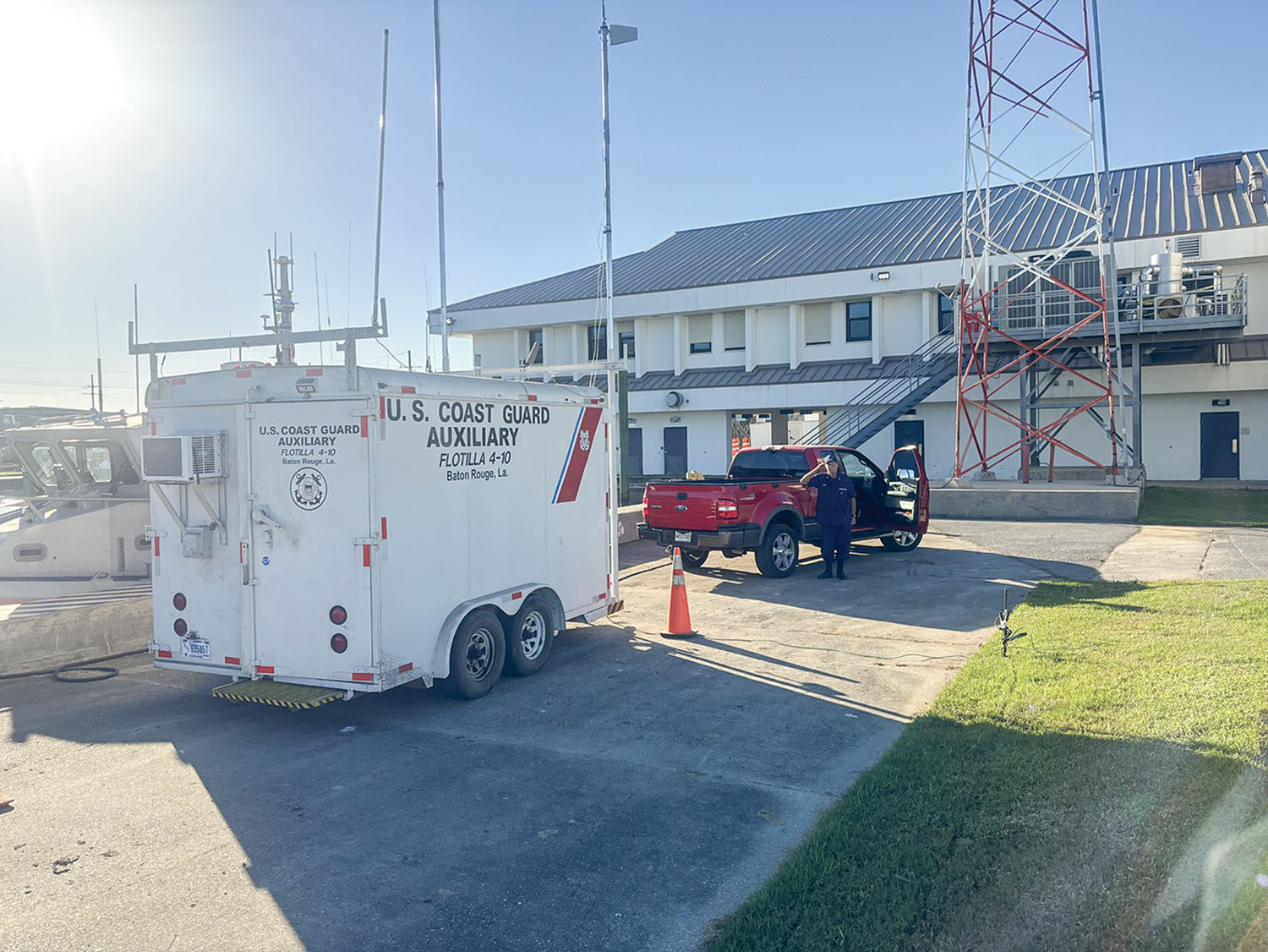Four members of the volunteer Coast Guard Auxiliary were recognized by the Coast Guard commandant for positioning and operating a communications trailer at Station Venice when Rescue 21’s Remote Fixed Facility (RFF) “experienced an unprecedented five-day total degradation” in November, leaving some 4,000 square miles of the Gulf of Mexico and Lower Mississippi River without Channel VHF 16’s international distress radio frequency.
The commandant of the Coast Guard presented the Coast Guard Meritorious Team Commendation to the Coast Guard Auxiliary Division IV Rescue 21 Outage Communications Response Team.
“Upon initial notification of the need for radio coverage, the four-member team responded immediately as they expeditiously gathered all necessary communications equipment and surface support gear and launched the Auxiliary Communications Trailer into position at Coast Guard Station Venice,” noted Capt. Kelly Denning, commander of Sector New Orleans, in writing the citation.
During the 55 resource hours, “Their presence was essential during critical communications with a disabled vessel in Breton Sound,” relaying “necessary information to Sector New Orleans Command Center to coordinate the response needed over Channel 16, assisting two people on board and ensuring they arrived safely back at the marina” on November 5, 2023, Denning noted.
Bernie David and Steve Oubre, members of Flotilla 4-10 in Baton Rouge, took the trailer from its storage facility at the Port of Greater Baton Rouge to Venice. Nick Frederick and Cedric Walker, members of Flotilla 4-7 in Metairie, La., stood watch in the trailer.
Walker is a retired professor from Tulane University’s Department of Biomedical Engineering and is staff officer for communications for Auxiliary Division IV, which overlays the area of responsibility of Sector New Orleans. He organized the effort, adding Lt. JG Ruth Tian and CWO Jason Bowen did the necessary administrative work to authorize and facilitate the project.
“Their rapid activation response and seamless transition to Venice, La., was crucial for monitoring the maritime distress frequency and was maintained flawlessly until Venice RFF could be reactivated for the sector,” Capt. Denning noted in the award citation.
The trailer was obtained from Marine Safety Unit Baton Rouge and outfitted with communications equipment. It features two retractable 25-foot telescoping antennas that are raised using a boat winch. A second accommodations trailer with bunks and cooking facilities is available if there is a need to deploy for several days.
“Height is might,” Walker told The Waterways Journal in pointing out VHF signals travel line-of-sight. The trailer has a VHF radius of 15–20 miles, but an upgrade is planned to add a taller, pneumatically operated tower to increase range to 30-35 miles.
In addition, the Auxiliary uses a 600-foot-tall tower in Lacombe, La., which gives coverage with a 40-mile radius. The communications system is tested weekly. Members of the team are all qualified with special communications training.
Twice before, Auxiliarists had to step in when standard Coast Guard radio communications went down. Just two months ago, Auxiliarist Dave Buras was able to use a 110-foot-tall tower in his back yard to monitor radio traffic from the comfort of his living room after a crucial tower in Reggio, La., went off the air.
It was later determined that an animal ate through the co-axial cable and disabled the Reggio tower.
Caption for photo: The Auxiliary Communications Trailer was moved to Coast Guard Station Venice to monitor radio communications during an outage of Rescue 21’s capabilities. (Photo courtesy of Cedric Walker)




